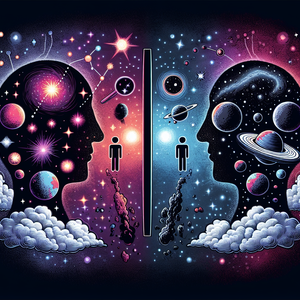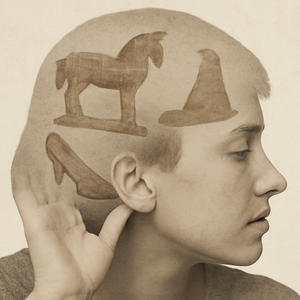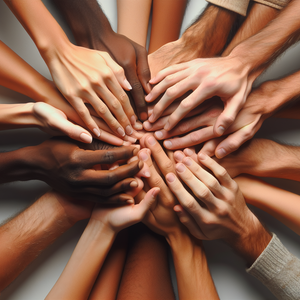The Lab as a Creative Space: Fostering Innovation

At first glance, art and science may seem to inhabit separate realms. However, both disciplines share a fundamental goal: to explore, understand, and reinterpret the world around us. Artists have long drawn inspiration from scientific principles, using techniques and concepts to create works that challenge perceptions and provoke thought. For instance, the intricate patterns found in nature, such as the Fibonacci sequence or the fractals of snowflakes, can serve as a muse for artists, leading to visually captivating works rooted in scientific phenomena. Conversely, scientists often find their best ideas in the creative processes that drive artistic endeavors. The synergy between these two realms can be particularly potent in laboratory settings, where the tools and techniques of science unlock new avenues for artistic exploration.
Laboratories as Creative Ecosystems
Modern laboratories are often equipped with cutting-edge technology that can be repurposed for creative projects. 3D printers, for instance, are not only tools for prototyping scientific models but can also be employed by artists and designers to create intricate sculptures and functional art pieces. By fostering an environment where scientists and artists collaborate, laboratories can become vibrant creative ecosystems. Several institutions have recognized this potential and have begun to offer residency programs for artists in scientific labs.
Breaking Down Barriers
While the collaboration between art and science offers immense potential, barriers still exist. Many scientists view their work through a lens of strict methodology, often hesitant to embrace the ambiguity and subjectivity that characterizes art. Conversely, artists may feel intimidated by scientific jargon and a perceived lack of creativity in lab settings. To break down these barriers, it is essential to cultivate an interdisciplinary culture that values diverse perspectives.
The Hidden Benefits of Laboratories
Beyond fostering creativity, laboratories offer hidden benefits that enhance their role as creative spaces. The structured environment of a lab can provide a sense of discipline that is often lacking in more traditional artistic venues. This structure allows for more rigorous experimentation and iteration, leading to refined outcomes that marry both scientific accuracy and artistic expression.
The laboratory as a creative space is not just an intriguing concept; it is a burgeoning reality that has the potential to transform both artistic practice and scientific research. By fostering collaboration between artists and scientists, laboratories can become incubators for innovation, yielding projects that inspire, educate, and challenge our understanding of the world.
Creative Technologist
Technology companies, art institutions, research labs, and creative agencies
Core Responsibilities
Collaborate with artists and scientists to design and implement interactive installations that blend technology and art.
Utilize programming languages (e.g., Python, JavaScript) to create digital experiences that engage audiences.
Prototype and test new ideas using tools like 3D printers and laser cutters.
Required Skills
Proficiency in coding and software development, particularly in multimedia applications.
Strong understanding of both artistic concepts and technical processes, enabling effective cross-disciplinary collaboration.
Familiarity with emerging technologies, such as virtual/augmented reality, is a plus.
Art Scientist
Academic institutions, museums, and interdisciplinary research organizations
Core Responsibilities
Conduct research at the intersection of art and science, exploring new methods to visualize scientific data creatively.
Collaborate with scientists to communicate complex concepts through artistic mediums, such as installations or visualizations.
Develop workshops to educate both artists and scientists about the potential of their collaboration.
Required Skills
A background in both art (fine arts, design) and science (biology, physics, etc.).
Strong communication skills to articulate scientific concepts to a non-scientific audience.
Experience with data visualization tools (e.g., Tableau, D3.js) and artistic techniques.
Digital Fabrication Specialist
Maker spaces, design studios, universities, and art collectives
Core Responsibilities
Operate and maintain advanced fabrication equipment, such as 3D printers and CNC machines, to create prototypes for art or research projects.
Collaborate with artists and designers to translate their concepts into tangible products.
Develop processes and best practices for using fabrication technology in creative applications.
Required Skills
Expertise in CAD software (e.g., AutoCAD, Rhino) and a strong understanding of materials used in digital fabrication.
Ability to troubleshoot technical issues related to fabrication equipment.
An eye for design and aesthetics, ensuring that final products meet artistic standards.
Interdisciplinary Program Coordinator
Universities, cultural institutions, and non-profit organizations focused on the arts and sciences
Core Responsibilities
Develop and manage programs that facilitate collaboration between artists and scientists within a laboratory setting.
Organize workshops, seminars, and exhibits that showcase collaborative projects and promote interdisciplinary dialogue.
Secure funding and partnerships to support innovative projects that blend art and science.
Required Skills
Strong project management skills, with experience in organizing events and workshops.
Excellent interpersonal skills to build relationships with diverse stakeholders, including artists, scientists, and funding organizations.
Knowledge of grant writing and fundraising strategies to support program initiatives.
BioArt Researcher
Art galleries, research institutions, and educational organizations focused on bio-art practices
Core Responsibilities
Explore the use of biological materials in artistic practice, conducting experiments that merge living systems with creative expression.
Document and analyze the outcomes of bio-art projects, sharing findings with both the scientific and artistic communities.
Collaborate with biologists and environmental scientists to address ecological issues through art.
Required Skills
Knowledge of biology, particularly microbiology and biotechnology, alongside a strong artistic background.
Familiarity with bioethical considerations and regulations related to working with living organisms.
Experience in project-based research and exhibiting scientific art installations.


